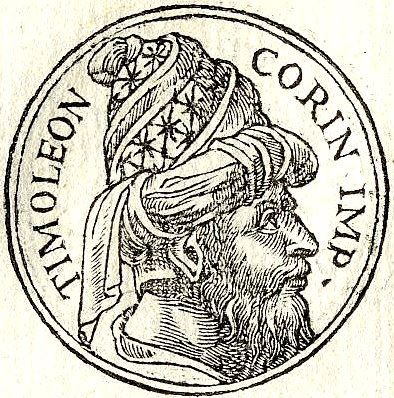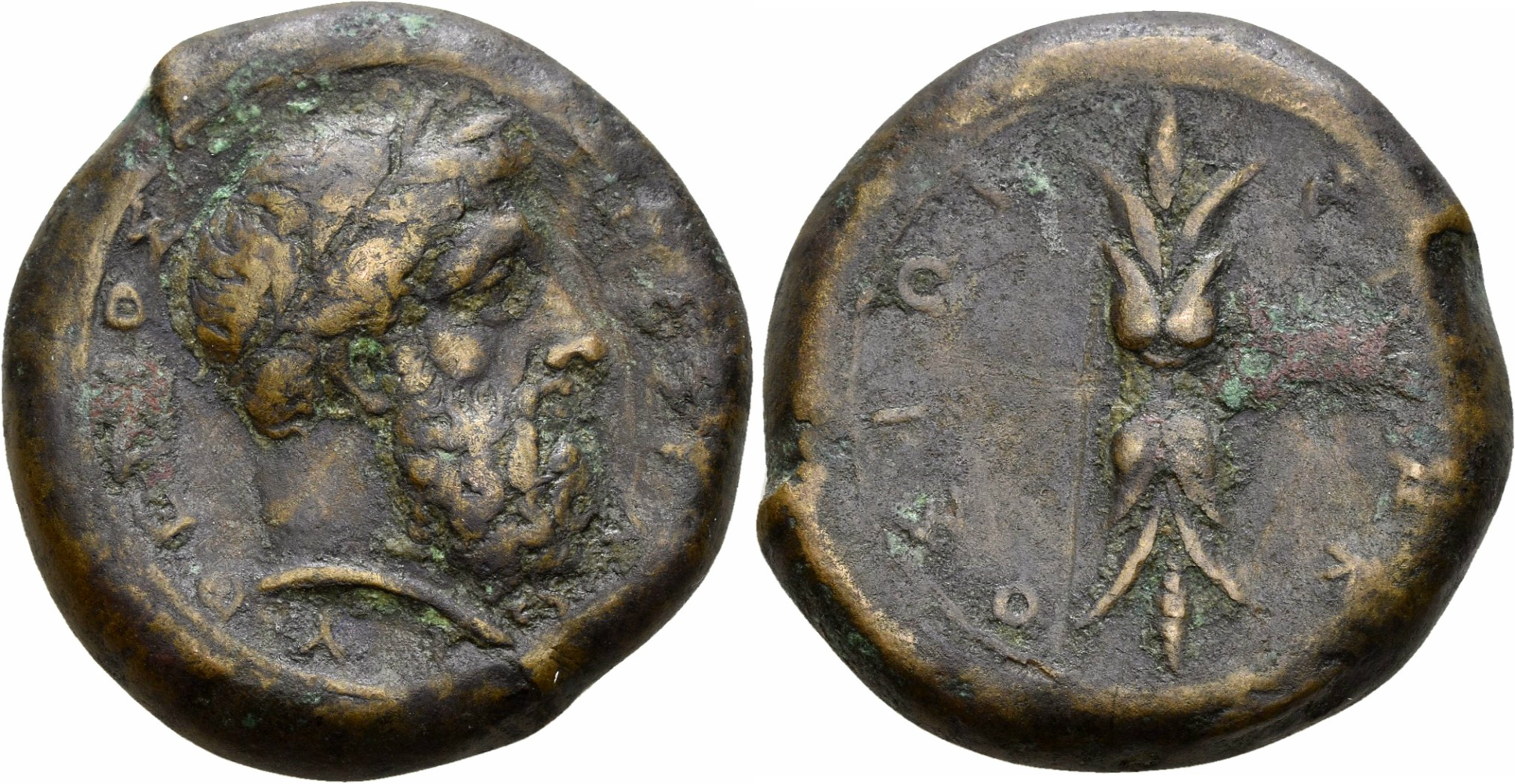Timoleon was a Greek statesman and general, who hailed from Corinth.
Because of the political problems facing Syracuse and the threat from Sparta, a group of Syracusans sent an appeal for help to Corinth which reached the city state in 344 BC. Timoleon was chosen by a unanimous vote to undertake the mission, and set sail for Sicily with seven ships, a few of the leading citizens of Corinth and 700 Greek mercenaries.
He defeated both Hicetas of Leontini and the Tyrant Dionysios II, and became the master of Syracuse. He at once began the work of restoration, bringing new settlers from the mother-city and from Greece generally, and establishing a popular government on the basis of the democratic laws of Diocles.
Timoleon retired into private life after he became blind some time before his death, but when important issues were under discussion he was carried to the assembly to give his opinion, which was usually accepted.
Because of the political problems facing Syracuse and the threat from Sparta, a group of Syracusans sent an appeal for help to Corinth which reached the city state in 344 BC. Timoleon was chosen by a unanimous vote to undertake the mission, and set sail for Sicily with seven ships, a few of the leading citizens of Corinth and 700 Greek mercenaries.
He defeated both Hicetas of Leontini and the Tyrant Dionysios II, and became the master of Syracuse. He at once began the work of restoration, bringing new settlers from the mother-city and from Greece generally, and establishing a popular government on the basis of the democratic laws of Diocles.
Timoleon retired into private life after he became blind some time before his death, but when important issues were under discussion he was carried to the assembly to give his opinion, which was usually accepted.

(1)
Timoleon

An
AE
Hemilitron
struck 344 - 336 BC
in
Syracuse
Obverse: ZEYΣ EΛEΘEΡIOΣ / Laureate head of Zeus Eleutherios right
Reverse: ΣYPAKOΣIΩN / Upright thunderbolt
Diameter:
-
Die Orientation: -
Weight: 17.8 g
Die Orientation: -
Weight: 17.8 g
Threatened by Carthage and dominated by Hiketas, the tyrant of Leontini, Syracusans sent an appeal for help to their mother city, Corinth.
By a unanimous vote Corinth selected Timoleon to set sail for Sicily with a few leading citizens of Corinth and a small troop of Greek mercenaries. After defeating Hiketas, Timoleon put order to Syracuse' affairs and established a democratic government. He repelled Carthage in several wars, ending with a treaty which divided the island.
Timoleon then retired without any title or office, though he remained practically supreme. He became blind before his death, but when important issues were under discussion he was carried to the assembly to give his opinion, which was usually accepted. When he died the citizens of Syracuse erected a monument to his memory, afterward surrounded with porticoes, and a gymnasium called Timoleonteum.
No references provided for this coin
